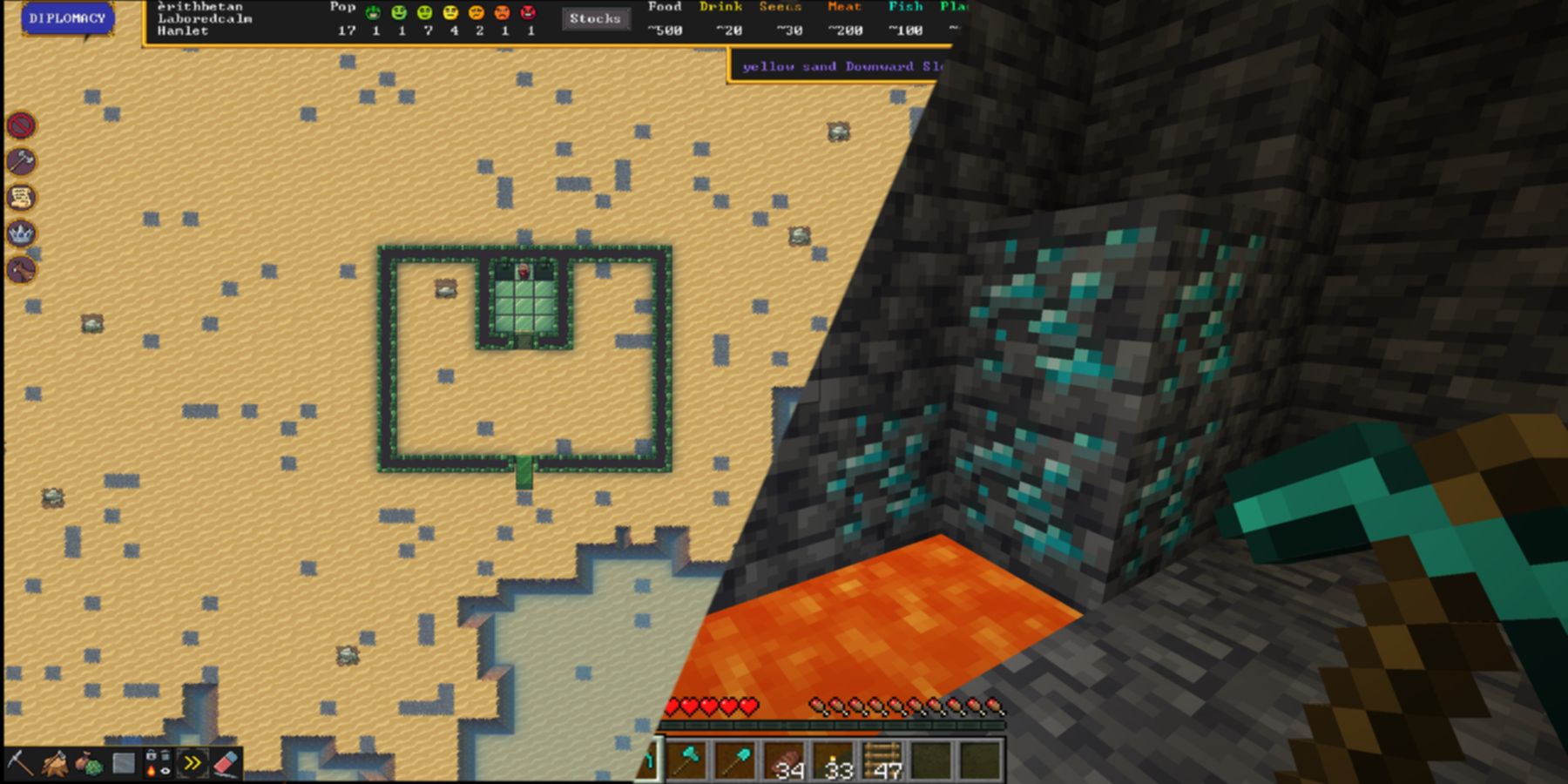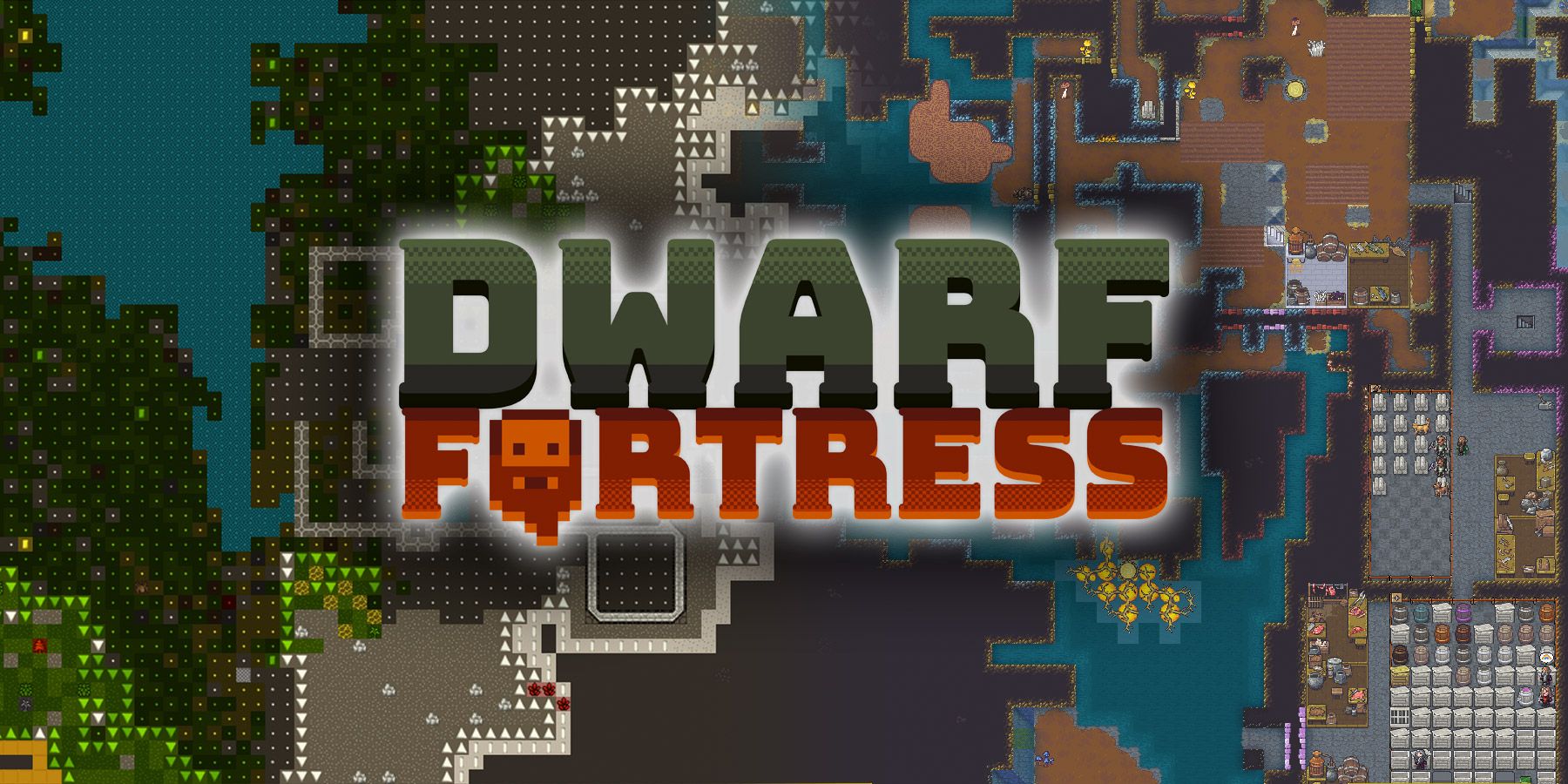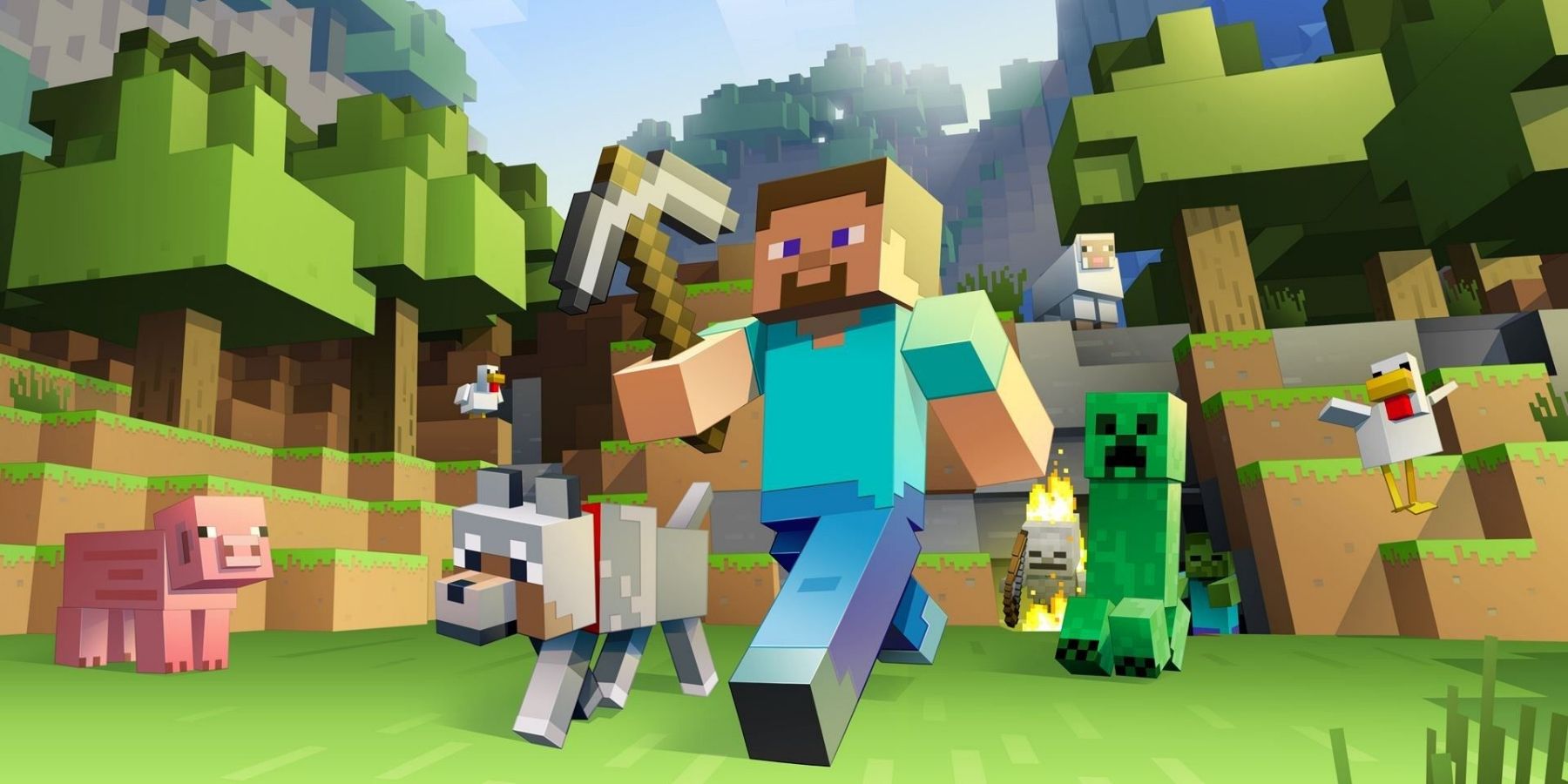Minecraft has served as the source of inspiration for many games throughout the years. Rust, Ark: Survival Evolved, and Cube World just to name a few. What some may not recognize however, is that it has its own sources of inspiration as well.
One of Minecraft's earliest inspirations is a game called Dwarf Fortress. It is a colony management game from 2006 that generates entire worlds full of their own unique history as players make their way through it. Despite Mojang no longer looking to it for inspiration, there are still many things Minecraft could learn from it.
What Is Dwarf Fortress?
Dwarf Fortress is a game that extends beyond colony management. As mentioned before, Dwarf Fortress' procedural generation includes the creation of histories for the entire world. Unlike Minecraft's 15 villager professions, Dwarf Fortress comes with more than 50+ different professions. It also requires sustaining dwarven citizens by ensuring there is enough water and food for all of them, and even has its own political system in dwarf colonies. Dwarf Fortress is a much more complex and detailed game, compared to a casual and more no-goals game like Minecraft. Despite Minecraft's complete history of simplicity, there are still things it could learn from Dwarf Fortress.
How Minecraft Can Continue to Learn From Dwarf Fortress
One of the best ways Minecraft could learn from Dwarf Fortress is by looking at how it employs villages. At the moment, all Minecraft players need is to create a box with windows, light sources, and a door in order for it to be suitable for a villager. Dwarf Fortress requires players to build inns, taverns, and much more in order to keep the dwarven inhabitance satisfied. Minecraft could learn from this by allowing players to create structures that have specific block requirements. For example, a structure like an inn could require a certain amount of beds to qualify. As a reward, players could earn Minecraft's best villager trades by ensuring their satisfaction.
Another thing Minecraft could employ is something that would enhance its mining and crafting aspects. Dwarf Fortress has a wide variety of metals, such as tin, platinum, nickel, and many more. All of these metals serve a specific purpose, as they can all be alloyed to create metals with specific purposes. Minecraft could take this feature while also maintaining its minimalist ideology. For example, Mojang could add steel to Minecraft, whose required materials, iron and carbon, already exist within the game. Bronze could also be added as an alloy of tin and copper. They could serve as tiers for players to progress through, rather than blazing their way straight to diamond.
The final thing Minecraft could learn from Dwarf Fortress is something it technically already has: weather and climate. Minecraft has five climates: snowy, cold, temperate, dry, and neutral. Despite this, every Minecraft biome has the ability to spawn next to one that is the complete opposite of it, such as a taiga and desert. Weather is also world-wide, so it never feels like the weather truly differs from location to location. Minecraft could add more depth to its climates and weather by making it feel more unique. Snow climates could snow more often, with the snow being limited to that location. Climate could also be improved to create a more natural progression when traveling through the world, seeing it become colder or warmer as the player moves on.
While Minecraft's future updates don't seem to have much of this in mind, it is still interesting to see the ways Minecraft could improve by looking to other games. Despite it becoming the #1 most purchased game in the world, it still has room to be influenced by other games.
Minecraft is available now for Mobile, PC, PS4, Switch, and Xbox One.



